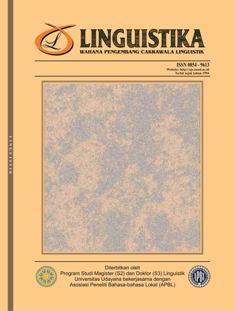PEMANFAATAN FONETIK ARTIKULATORIS UNTUK PENINGKATAN KEMAMPUAN PELAFALAN BAHASA SASAK ANAK DOWN SYNDROME RINGAN DI LOMBOK TIMUR
Abstract
This research was aimed to improve Sasak pronunciation skill for mild down syndrome children in East Lombok through the use of articulatory phonetic with intensive teaching method.
This study applied a classroom action research design which applies four steps namely planning, action, observation, and reflection. This research was conducted into one cycle by applying those four steps action research design. Analyzing data was done by describing the result of qualitative and quantitative data. The result of data analysis is presented into table and chart as well as is described into narrative sentences.
In this research the improvement of students’ pronunciation skill in speaking Sasak language were proven by the result of qualitative data, such as the result of test, observation, taking note and also documentation. The use of articulatory phonetics has successfully improved the students’ pronunciation skill especially in pronouncing vowel sound, consonant sound and pronouncing word or phrase. The improvement of students’ speaking skill were also proven by the improvement of mean score between pretest, cycle I posttest and cycle II posttest. The mean score showed that the improvement from 54,40 % on pretest to 68,62 % and finally became 76,75 % on cycle II













